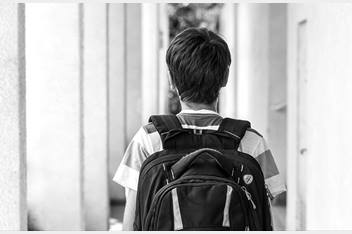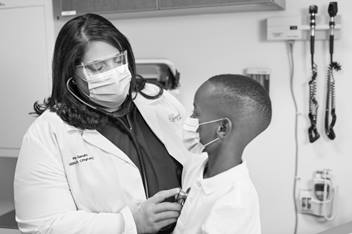Creating a School-Based Health Model in Southern Ohio

Nationwide Children’s Hospital operates one of the most prominent school-based health programs in the United States, called Care Connection. With 14 primary clinics located inside schools, two Mobile Care Centers, school-based asthma therapy across almost 30 districts and many other initiatives, the hospital can care for children where they already spend significant amounts of time.
School-based health care has had an important, positive impact on the children of central Ohio. But what about children in more rural areas of southern and southeastern Ohio, who may have less access to health care than their Columbus-area peers?
With generous funding from The Chan Zuckerberg Initiative, Nationwide Children’s Hospital is one year into a project to address that. The hospital has created the School Health Learning Collaborative, engaging 13 school health teams across nine mostly Appalachian Ohio counties – ultimately touching 67 school buildings and nearly 36,000 students.
The goal is to help these teams create comprehensive school-based health clinics and services for children so they can spend more productive time in school and become healthier overall. School-based programs like these are also a strategy of the Ohio Department of Education’s “Whole Child Framework,” which seeks to support not only students’ education, but also their physical health, mental health and safety.
“A lot of things came together that allowed this to happen,” says Theresa Hatton, Care Connections’ manager of Strategic Initiatives. “More and more people were coming to us at Nationwide Children’s wanting to learn how to start their own school-based health programs. The state was supporting the development of Ohio’s Whole Child Framework, and we have the goal of supporting students’ ability to be in school ready to learn by addressing comprehensive health care needs.”
Each team consists of at least one regional primary care provider, a school district and their behavioral health partner. As teams, they have participated in more than 40 hours of learning sessions with Nationwide Children’s, covering everything from space planning and equipment needs to the actual delivering of services. Then, after the completion of a needs assessment, business plan, and necessary legal agreements, the teams divide more than $1 million from the funder to implement school-based health services.
The teams are at various stages in the journey. Some are still completing business plans, while others have school-based services already up and running. And still others, who are planning on incorporating clinics into schools, are just breaking ground.
Stacey Gabriel, RN, MBA/MHA, president and CEO of Hocking Valley Community Hospital in Logan, says her team is hoping to have a completed clinic at Logan High School in the spring of 2023. That team, including Hocking Valley Community Hospital, Hopewell Health Centers and Logan-Hocking School District, has received grant funding through Nationwide Children’s and the Ohio Department of Health.
“We work closely with our school district already, and it was the realization that many of the students didn’t have a primary care provider in the community that made us pursue this,” says Gabriel. “They were being cared for in our Urgent Care and at other places, but that’s not ideal. These students were missing school because of health and other issues, and that was affecting their learning.”
Along with the learning collaborative, Nationwide Children’s is also working with the teams’ primary care providers to bolster their ability to provide behavioral health care. Another focus of the project is the implementation of behavioral health prevention programming in schools – such as the evidence-based Signs of Suicide® curriculum.
There’s an increased understanding of the ways that education and health are interrelated, and the School Health Learning Collaborative is helping the teams explore and capitalize on each other’s strengths.
“School is not in the business of health care, and health care is not in the business of education,” says Gabriel. “But if we can work together to get needs met, we should absolutely do it.”



